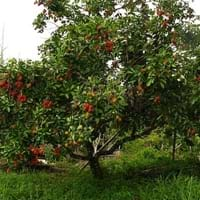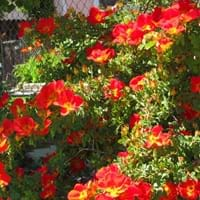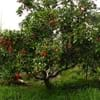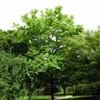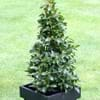Life Span
Perennial
Perennial
Type
Tree
Flowering Plants, Ornamental Plants, Shrubs
Origin
Southeastern Asia, China
Not Available
Types
Brewster, Mauritius, Hak ip
Not Available
Habitat
Subtropical climates, Tropical regions, Warmer regions
Foot Hills
USDA Hardiness Zone
10-11
Not Available
AHS Heat Zone
12-9
Not Available
Sunset Zone
H1, H2, 21, 22, 23, 24
Not Available
Habit
Oval or Rounded
Clump-Forming
Flower Color
Light Yellow, Yellow green
Orange Red, Yellow
Flower Color Modifier
Bicolor
Bicolor
Fruit Color
Red, Magenta
Non Fruiting Plant
Leaf Color in Spring
Red, Dark Green, Copper
Green
Leaf Color in Summer
Dark Green
Green, Dark Green
Leaf Color in Fall
Dark Green
Dark Green
Leaf Color in Winter
Dark Green
Dark Green
Leaf Shape
Long Linear
Pinnate
Plant Season
Spring, Summer, Fall, Winter
Spring, Summer, Fall
Sunlight
Full Sun, Partial Sun
Full Sun, Partial Sun
Type of Soil
Loam, Sand
Loam, Sand
The pH of Soil
Acidic, Neutral
Acidic, Neutral
Soil Drainage
Well drained
Well drained
Bloom Time
Early Spring
Spring, Late Spring, Early Summer, Summer, Late Summer, Early Fall, Fall
Repeat Bloomer
No
Not Available
Tolerances
Not Available
Drought
Where to Plant?
Ground
Container, Ground, Pot
How to Plant?
Seedlings, Stem Planting, Transplanting
Cuttings
Plant Maintenance
High
Medium
Watering Requirements
Requires regular watering
Average Water Needs
In Summer
Lots of watering
Lots of watering
In Spring
Twice a week
Moderate
In Winter
Regular watering required
Average Water
Soil pH
Acidic, Neutral
Acidic, Neutral
Soil Type
Loam, Sand
Loam, Sand
Soil Drainage Capacity
Well drained
Well drained
Sun Exposure
Full Sun, Partial Sun
Full Sun, Partial Sun
Pruning
Prune after harvesting, Prune lower leaves, Prune to control growth
Remove damaged leaves, Remove dead branches, Remove dead leaves
Fertilizers
All-Purpose Liquid Fertilizer, Fertilize after blooming period
All-Purpose Liquid Fertilizer
Pests and Diseases
Aphids, fungus, Leaf curl
Beetles, Black Spot, Caterpillars, Downy mildew, Mosaic viruses, Powdery mildew, Rust, Scale insects, Thripes
Plant Tolerance
Not Available
Drought
Flowers
Insignificant
Showy
Flower Petal Number
Single
Double
Edible Fruit
Yes
Not Available
Foliage Texture
Medium
Medium
Foliage Sheen
Glossy
Glossy
Invasive
No
Not Available
Self-Sowing
Yes
Not Available
Attracts
Not Available
Birds, Butterflies
Aesthetic Uses
Showy Purposes
Showy Purposes
Beauty Benefits
Not Available
Not Available
Environmental Uses
Not Available
Air purification
Medicinal Uses
anti-allergy, Bone strength, Digestive disorders, Heart problems
Not Available
Part of Plant Used
Fruits
Flowers
Other Uses
Used As Food, Used as Ornamental plant
Oil is used in perfume, soaps, creams, etc.
Used As Indoor Plant
No
Yes
Used As Outdoor Plant
Yes
Yes
Garden Design
Edible, Feature Plant, Foundation, Fruit / Fruit Tree, Hedges, Shade Trees, Topiary / Bonsai / Espalier, Tropical
Container, Cutflower, Feature Plant, Foundation, Mixed Border, Topiary / Bonsai / Espalier
Botanical Name
LITCHI chinensis
Rosa foetida
Common Name
Litchee, Litchi, Lychee
Austrian briar, Persian yellow rose, Austrian copper rose
In Hindi
लीची
Austrian copper rose
In German
Lychee
Die Gelbe Rose, Fuchs-Rose, Wachs-Rose, Persische Gold-Rose, Austrian Briar
In French
Lychee
Le rosier fétide
In Spanish
Lychee
Rosa foetida
In Greek
λίτσι
Austrian copper rose
In Portuguese
lichia
Rosa fétida
In Polish
Lychee
Róża żółta
In Latin
Lychee
Austrian copper rose
Phylum
Tracheophyta
Magnoliophyta
Class
Magnoliopsida
Magnoliopsida
Family
Sapindaceae
Rosaceae
Clade
Angiosperms, Eudicots, Rosids
Not Available
Tribe
Not Available
Not Available
Subfamily
Sapindoideae
Not Available
Number of Species
Not Available
Properties of Lychee and Austrian Copper Rose
Wondering what are the properties of Lychee and Austrian Copper Rose? We provide you with everything About Lychee and Austrian Copper Rose. Lychee doesn't have thorns and Austrian Copper Rose doesn't have thorns. Also Lychee does not have fragrant flowers. Lychee has allergic reactions like Itchiness and Austrian Copper Rose has allergic reactions like Itchiness. Compare all the properties and characteristics of these two plants. Find out which of these plant can be used as indoor plant. If you are interested to decorate your house and garden, find out aesthetic uses, compare them and select the plant which will beautify your surrounding. Along with beautification, try comparing medicinal and edible uses of Lychee and Austrian Copper Rose and you can choose the plant having best and most benefits.
Season and Care of Lychee and Austrian Copper Rose
Season and care of Lychee and Austrian Copper Rose is important to know. While considering everything about Lychee and Austrian Copper Rose Care, growing season is an essential factor. Lychee season is Spring, Summer, Fall and Winter and Austrian Copper Rose season is Spring, Summer, Fall and Winter. The type of soil for Lychee is Loam, Sand and for Austrian Copper Rose is Loam, Sand while the PH of soil for Lychee is Acidic, Neutral and for Austrian Copper Rose is Acidic, Neutral.
Lychee and Austrian Copper Rose Physical Information
Lychee and Austrian Copper Rose physical information is very important for comparison. Lychee height is 910.00 cm and width 1,070.00 cm whereas Austrian Copper Rose height is 150.00 cm and width 170.00 cm. The color specification of Lychee and Austrian Copper Rose are as follows:
Lychee flower color: Light Yellow and Yellow green
Lychee leaf color: Red, Dark Green and Copper
Austrian Copper Rose flower color: Orange Red and Yellow
- Austrian Copper Rose leaf color: Green
Care of Lychee and Austrian Copper Rose
Care of Lychee and Austrian Copper Rose include pruning, fertilizers, watering etc. Lychee pruning is done Prune after harvesting, Prune lower leaves and Prune to control growth and Austrian Copper Rose pruning is done Remove damaged leaves, Remove dead branches and Remove dead leaves. In summer Lychee needs Lots of watering and in winter, it needs Regular watering required. Whereas, in summer Austrian Copper Rose needs Lots of watering and in winter, it needs Average Water.
